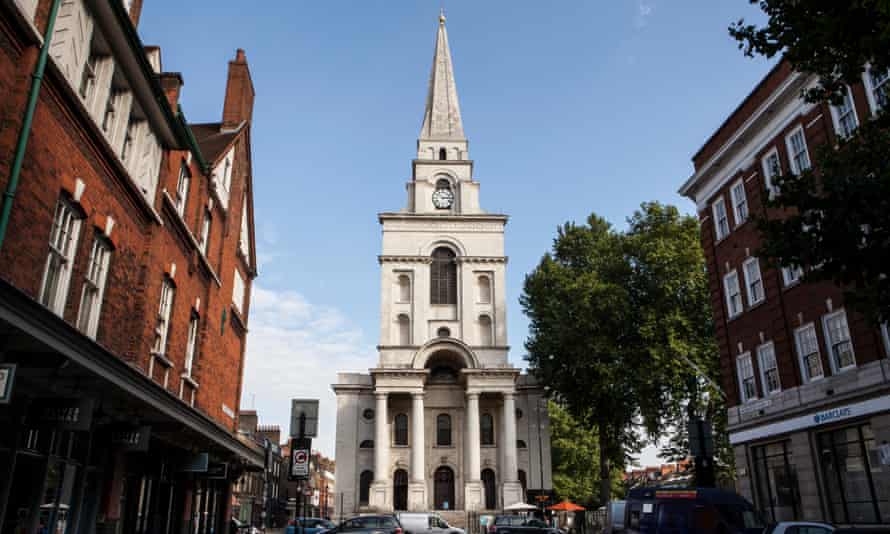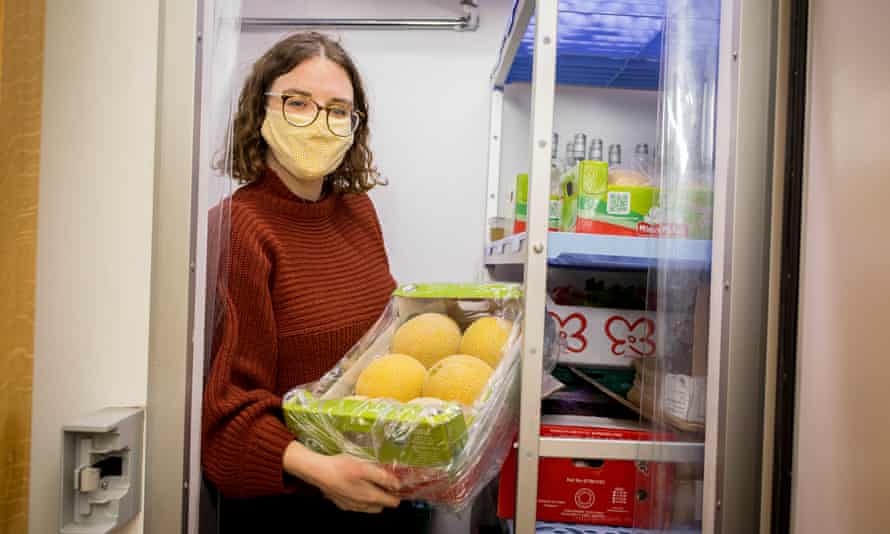In the crypt of a 283-year-old London church, you would not normally expect to see displays of fresh fruit, vegetables, meat and fish next to shelves of tinned food, toilet rolls and nappies, and customers with baskets doing their weekly shop.
But from September, that will be the scene at the City of London’s first social supermarket, which is to open in the vaults of Christ Church Spitalfields, a Nicholas Hawksmoor-designed church close to the financial district. It will replace a food bank set up during the pandemic that has been used by 20 to 70 families a week during the past year.
Small social supermarkets have been springing up across the UK in recent years, some of them having started out as food banks. (At a social supermarket users pay for their groceries, but get a large discount.) They cater for low-income families – in the case of Christ Church these are referred by the local primary school – and pay a membership fee and/or a weekly fee for their shop.

The vast majority of the families who use the Christ Church food bank include one or two adults who are working. Natasha Grimmett, head of social transformation at the church, said: “With the energy crisis and the rising cost of living, it’s hard when two parents are working and still they’re not able to meet basic necessities. It’s a misconception that people using food banks are unemployed.”
Rather than picking up a free package of food and other staples, families using the new social supermarket will be able to choose from dozens of products. For a membership fee of £15 or £20 a year, they can do their weekly shop each Thursday for a fee of £3. The Pepys social supermarket in Lewisham, south London, runs on similar lines: local people pay a £3.50 weekly fee for shopping that would normally cost £30. Those who cannot afford this will still get help from Christ Church.

Everything in the social supermarket will be colour-coded: green is for lower-cost staples such as rice, pasta, tinned food and basic vegetables, plus toilet rolls and sanitary products; the yellow category includes milk, eggs, more premium veg, fruit and cleaning products; red is for the most expensive items – meat, fish and disposable nappies.
A single working mother who has been a regular food bank user said the social supermarket was “a very good idea as it will give people the opportunity and freedom to choose what they need in their basket without feeling embarrassed”.
Set up by pastor Brigid Beney in the summer of 2020 to help local families, the Christ Church food bank expanded last year thanks to funding from the UK subsidiary of Japanese telecoms firm NTT Data. This was part of an initiative called The City Gives Back, which aimed to help shop and hospitality workers in the Square Mile who were hit hard when office workers switched to working from home and the City became a ghost town.
The food bank has received nearly £50,000 so far from NTT Data UK and some of its clients, including insurers Howden Group, Tokio Marine Kiln and Ascot Group, and also takes donations from local supermarkets, often of food close to its sell-by date. NTT and Ascot have committed to funding the project for another year, and Grimmett said the church had also been applying for grants.
She said turning the food bank into a social supermarket would help it reach more people and offer them a wider variety of food and other essential items – as well as avoiding the stigma of a handout. It will also offer debt counselling and classes in money management, IT and English language.
“People have a bit more autonomy in what they choose,” Grimmett said. “We are moving our model from a crisis response in the pandemic to addressing the chronic issues in our area, which include the cost of living.”

The City of London is an area of vast social disparity. It’s where the highest earners in the country work – it had an average income of £55,200 last year, compared with £25,000 across the UK, according to HMRC. What some of the families live on for a week, some City workers easily spend on food in a day.
The food bank was the idea of Kim Gray, who was head of diversity at NTT Data UK. She has now left the company but still leads the food project, in collaboration with Pete Pentecost, who at the start of the pandemic lost his job handing out the free City AM newspaper to commuters at Bank station.
“Pete thinks the social supermarket is a great idea. It’s just the next evolution of the food bank,” said Gray. “The City of London has been generous during the pandemic and has made people more aware of local issues, but it’s still very tough for many.”